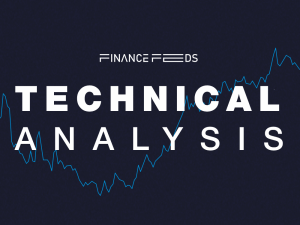M&A in Financial Services grew in 2020
Morgan Stanely was a buyer purchasing both online broker E*TRADE Financial for $13.127 billion and fund manager Eaton Vance for $6.931 billion

2020 was notable for financial services firms in several ways.
COVID-19 related policies and an economic lockdown forced many businesses to change the way the ran their operations.
Staff no longer came into the office but worked remotely instead.
IT departments had to quickly ensure that key systems could be networked and accessed externally and that phones could be reconfigured to let people working from home to talk to customers, clients and colleagues. While allowing those calls to be recorded and monitored where necessary.
Even as workers settled into their routines and a world of Zoom meetings, video calls and workflow applications. trading volumes and interest in opening new accounts took off as private investors found themselves with time on their hands and markets that were bouncing sharply out of bear market territory.
By and large, these new working arrangements stood up very well to what can best be described as testing times and many trading records were broken during 2020 as a result.
Now, research conducted by S&P Global Market Intelligence has shone a light on M&A seen within financial services during 2020.
The study focused on deals undertaken in the USA and found that there were 420 transactions during the year, a figure which averages out at 35 per month and that was up from the 396 deals, that were concluded in the sector during 2019.
US investment bank Morgan Stanley was involved in the two largest transactions and in both cases, it was a buyer purchasing both online broker E*TRADE Financial for $13.127 billion and fund manager Eaton Vance for $6.931 billion.
However, despite those two heavyweight deals and the higher number of overall transactions, the amount spent on M&A in US financial services in 2020 came in at just $34.15 billion, well below the $45.33 billion that was spent in 2019.
In the UK M&A in the sector was dominated by the London Stock Exchange Group, which acquired financial data and trading business Refinitiv and sold Borsa Italiana to Euronext, deals that had a combined value of well over $30.0 billion the Refintiv deal alone is thought to have generated fees of $1.10 billion for advisors to the transaction.
The Borsa Italiana deal aside there were few significant M&A deals between European financial services business in 2020. However, that may change in 2021.
Many of Europe’s bank are undercapitalised and held back by poorly performing loans books and lack of scale, particularly when compared to their US counterparts.
One of whom, Bank of America, believes that consolidation in the sector is coming. Giorgio Cocini, BofA’s co-head of the financial institution’s group in EMEA said recently that:
“Before 2022 we expect four to six large deals in the space,” adding that “hopefully (one of these will be) a pan-European one”
European banks have a history of merging and consolidating domestically but cross-border M&A has a patchy track record and has been held back by the lack of a formal banking union in the EU.
In the summer of 2020, Spain’s CaixaBank SA acquired rivals Bankia SA for €3.80 billion. Whilst Banco Sabadell explored a possible merger with BBVA though those talks led nowhere and instead Sabadell ended up putting UK Bank TSB (which it had purchased in 2015) up for sale.
Mergers between Credit Suisse and UBS in Switzerland, and Societe Generale and BNP Paribas in France are top of the M&A bankers wish lists. However, deals of that size and complexity tend to take on political ramifications in Europe and that’s a dimension that business leaders tend to shy away from.









